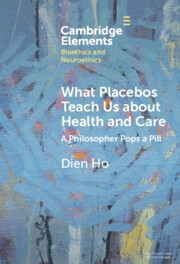Element contents
What Placebos Teach Us about Health and Care
Published online by Cambridge University Press: 26 September 2023
Summary
- Type
- Element
- Information
- Online ISBN: 9781009085496Publisher: Cambridge University PressPrint publication: 14 December 2023



